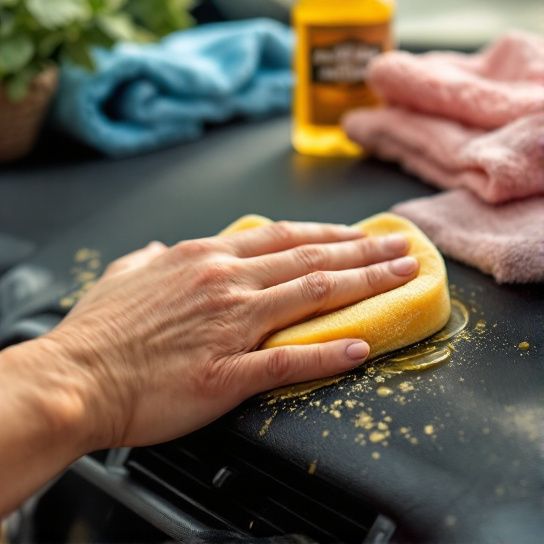Have you ever noticed how some days the sun just feels *different*? Like it’s wrapping around you in the perfect embrace, giving you that unprecedented boost of energy? Here’s a little secret not often discussed: the sun does wonders—not just for your mood, but for your natural beauty regimen. Yep, we’re getting into the nitty-gritty of what I like to call “Beauty Sun Practice.”
A Glimpse Into the Charm of Sun Energy
Imagine this: you wake up, the sun streams through your window, and suddenly, the daily grind seems a tad bit more inviting. It’s not just coffee that can ignite this kickstart—it’s the sun! But, it might leave you pondering, is that sunlight doing you good or setting your skin up for trouble?
No doubt about it, the sun’s energy is massively powerful. When handled responsibly, it can become a natural enhancement for your beauty arsenal. But before I dive headlong into how to incorporate this into your daily routine, let’s chat about why it works in the first place.
Why Sunlight Plays a Role in Beauty
Here’s the lowdown: sunlight helps in the production of vitamin D, vital for maintaining skin health and overall vitality. Vitamin D bumps up the turnover rate of cellular regeneration, which, translated into skincare terms, means a fresher, more youthful complexion.
Got dark circles or a dull look to your skin? You might be lacking some sun-kissed vitamin D. But hold up! This doesn’t mean sunbathing without protection is the way to go. Striking a balance is key, and that’s where strategic sun exposure comes into play.
The Fundamentals of Beauty Sun Practice

Now, I wouldn’t pitch the dream of glowing skin under the sun without backing it up with a few steps on how to properly bask in its glory. It’s all about mindful management with these guys: products.
Step 1: Timing Is Everything
Here’s something not-so-new yet often ignored: those hours between 10 a.m. and 4 p.m.? Best stayed out of. The sun’s rays are at their most dazzling—and damaging—self here. Aim for mornings or late-afternoon strolls. Trust me on this one; it’s basically sun-safety 101.
Step 2: Embrace Natural Sunscreens
This is where natural beauty products strut their stuff. What’s the spiel? They can offer your skin protection without hosting a laundry list of hard-to-pronounce chemicals. Ingredients like zinc oxide and titanium dioxide work wonders, creating a screen that reflects sunlight away from your body. So, while other sunscreens lodge in your pores and mess with your skin’s chemistry, natural choices cater to your skin’s long-term health.
Step 3: Indulge in After Sun Care
Had a delightful jaunt under solar rays? Don’t skip on the post-sun TLC. Reach for those aloe vera gels or luscious shea butter creams—magically soothes and hydrates sun-exposed skin. Also handy to mention here are products brimming with antioxidants. They fight the radicals your cheeky sun exposure might have accumulated.
Step 4: Prioritize Hydration
Water. Water. More water. The trifecta of post-exposure rescue and another natural beauty product—keeps your skin plump and flushes out toxins. Simple but too often overlooked, right?

Step 5: Nutrition Booster
Rely on sun-friendly foods filled with antioxidants, vitamins C and E, like berries and avocados, to support skin recovery. These foods work overtime inside out. Think of them as energizing sun supplements for your skin.
Common Pitfalls in Utilizing Sun Energy for Skin Health
Now, before you race outside to implement these steps, let’s loop back to some common blunders folks tend to tumble into.
Mistake 1: Overindulgence
Yes, the sun’s rays bestow loads of good stuff, but moderation is vital here. Overexposure is counterproductive, doing the opposite of our intended skin rejuvenation.
Mistake 2: Skipping Daily SPF
Natural beauty products or conventional ones, SPF is an unskippable ally regardless of cloud coverage! The rule is don’t leave home without some form of it on your skin.
Mistake 3: Ignoring Your Lips and Scalp

Two sneaky spots that often sidestep our beauty radar. Invest in lip balms with SPF and don’t forget to pop a wide-brimmed hat on if you plan an extended outdoor day.
Harnessing Sun Energy Features With Natural Beauty Products
Natural beauty products wired into this solar gig can mean everything. Why? Because they heed the dual demand of protection *and* enhancement. Carry forward these interviews with your skin:
- Sunscreens:
- Derive glamour from brands that respect plant complexes, safe minerals, sans chemicals.
- Aloe Vera:
- A staple in any post-sun agenda, whether in gel or a nurturing lotion.
- Essential Oils And Herbal Blends:
- Lavender, jojoba, or tea tree serve dual roles—nourishing while adding fragrant pleasure.
Wrapping It Up: A Sunbeam of Beauty Wisdom
So, to recap our sun journey: sunlight isn’t just about July vacations and Instagrammable tans. It reigns supreme as a natural, affordable, and readily abundant ally in anyone’s skincare repository. It improves mood, provides healthy vitamin D, and plays the underrated role of rejuvenating energy catalyst.
Integrate this Sun energy path into your daily habits selectively and perceive the benefits in your skin’s health and glow over time. Just remember, practice makes progress. Tread forth, try it out, savor the sunlight. Your skin, in all its luminous glory, will thank you!
Frequently Asked Questions
What does it mean if a product is labeled as “natural” in the context of beauty products?
If a product is labeled as “natural,” it does not necessarily mean it contains no synthetic chemicals. The term “natural” is not defined by the U.S. government, so it is crucial to read the ingredient list to understand what the product contains. Natural cosmetics typically include ingredients found in nature, such as mica, silica, and clay, without significant chemical alteration[1][3][5>.
Why aren’t all beauty products natural, and what are the challenges in creating natural cosmetics?
Cost is a significant factor; synthetic ingredients like talc, mineral oil, and phthalates are much cheaper than organic ingredients. Additionally, natural products often lack the preservatives and chemicals that help maintain the product’s stability and texture. Creating natural cosmetics that are blended, preserved, and bacteria-free without using proven chemicals is challenging[1][3][5>.
When should someone consider using natural beauty products or skincare?
Consider using natural beauty products if you have a known allergy to chemical ingredients like preservatives. However, it is essential to check the ingredients and patch test the products, as natural ingredients can also cause allergies. Natural skincare can be beneficial for those seeking gentler, more environmentally friendly options, but it may not work for everyone[1][3][5>.
How can I ensure that a skincare product is truly natural or organic?
To ensure a skincare product is truly natural or organic, look for certifications like USDA Organic or ECOCERT. Read the ingredient list carefully for recognizable natural ingredients and avoid products with excessive synthetic additives. Research the brand’s reputation and ingredient sourcing practices to make an informed decision[3][5>.
References

